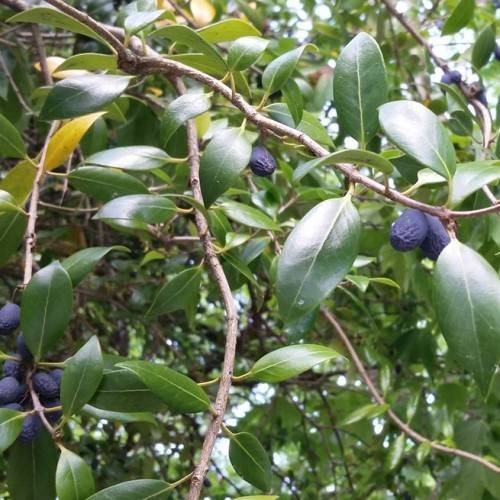
holly olive
Osmanthus heterophyllus
Cycle:
Perennial
Watering:
Average
Hardiness Zone:
7 - 9
Flowers:
Flowers In Autumn
Sun:
Full sun,part shade
Fruits:
Fruits Ready In
Leaf:
Yes
Growth Rate:
Low
Maintenance:
Moderate
Salt Tolerant:
Yes
watering
Water holly olive plants deeply but infrequently. Water when the top 2 to 3 inches of soil is dry. Give plants a good soaking—approximately 1 inch of water—once a week, or longer if temperatures are cool. Avoid overwatering; waterlogged soil can lead to root rot.
sunlight
The holly olive (Osmanthus heterophyllus) is an attractive shrub that grows best in sunny, well-drained areas. It is cold-tolerant and does best in full sunlight or part shade. In order to promote flowering and a dense, healthy growth habit, it should be grown in sun for about 6 hours per day. If the holly olive is planted in a shady location, it will grow but may become leggy with less full flower production. In areas with very hot summers, some afternoon shade is recommended to protect the foliage from drying out and scorching.
pruning
Holly olive (Osmanthus heterophyllus) is a plant species that requires regular pruning for proper growth. Pruning should be done every 1-2 years in spring or early summer months. The purpose of pruning is to encourage new growth and reduce the size of the plant. The most important aspect is to remove unhealthy, weak, or broken branches and used pruners or loppers for a precise and clean cut. As a general rule, prune only a third of the total shrub. It is important to not to cut back more than that or it could have a negative effect on the overall health and growth of the plant. It’s also helpful to remove any dead twigs and prune away any crossed branches, as this will help improve air circulation and sunlight penetration through the canopy. Additionally, if needed, thin out the inside of the shrub. This will give the plant an overall better shape and aid in creating a more attractive appearance.
